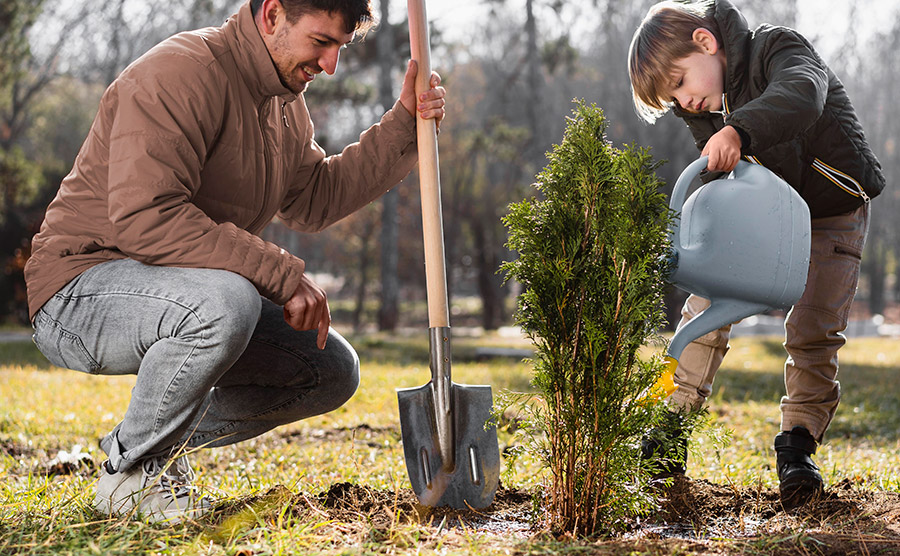
Planting trees around your home is an investment that yields both aesthetic and environmental rewards. By choosing the right tree, planning its placement thoughtfully, and providing proper care, you can create a lush and inviting landscape that enhances your property’s value and your overall quality of life. However, this endeavor requires more than just digging a hole and plopping a sapling in. Let’s delve into the art and science of planting trees correctly to ensure they flourish and become an integral part of your landscape for generations to come.
Choose the Right Tree
The first and perhaps most crucial step is choosing the right tree species for your location. Factors to consider include the climate, soil type, and available sunlight. Native trees are often the best choice as they have adapted to the local environment and are more likely to thrive. Research the growth habits, mature size, and special requirements of the tree species you’re interested in to ensure it’s a good fit for your property.
Plan for Placement
Strategic placement of trees can enhance the aesthetics of your property and provide practical benefits. Consider the eventual size and shape of the tree as it matures. Plant taller trees on the north side of your house to provide shade during hot summer afternoons, and place smaller trees on the east and west sides to shield your home from the early morning and late afternoon sun.
Prepare the Site
Once you’ve chosen the right tree and its ideal location, it’s time to prepare the planting site. Clear away any grass, weeds, or debris and loosen the soil in a wide area around the planting hole. This allows the tree’s roots to penetrate the soil easily and establish themselves.
Dig the Perfect Hole
The size and depth of the planting hole are critical for the tree’s success. The hole should be twice as wide as the tree’s root ball but only as deep as the root ball itself. Planting too deeply can suffocate the roots, while planting too shallowly exposes them to harsh conditions. Gently remove the tree from its container and place it in the hole, ensuring that the top of the root ball is level with the ground.
Fill and Tamp
Backfill the hole with the soil you removed, mixing in compost or organic matter to improve soil structure. As you fill the hole, gently tamp down the soil to remove air pockets that can hinder root growth. Water the tree as you fill to settle the soil and eliminate any air gaps.
Mulch and Water
Apply a layer of mulch around the base of the tree, leaving a few inches of space around the trunk to prevent moisture buildup and potential rot. Mulch helps retain soil moisture, regulate temperature, and suppress weeds. Water the newly planted tree thoroughly after mulching and continue to water it regularly, especially during the first year when its roots are establishing.
Provide Care and Attention
Your commitment to your newly planted tree doesn’t end with the last scoop of soil. Regularly check for signs of stress, such as wilting leaves or slow growth. Prune any damaged or dead branches to encourage healthy growth, and consider fertilizing if the tree shows signs of nutrient deficiency.




